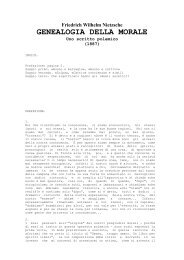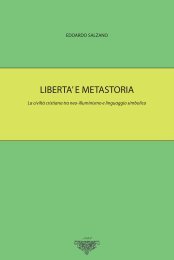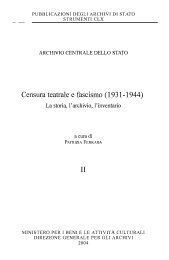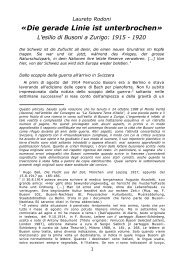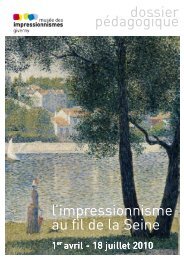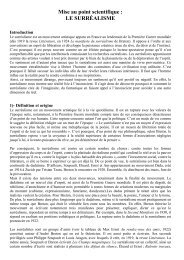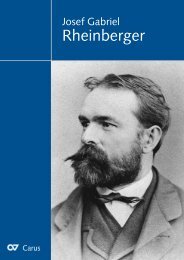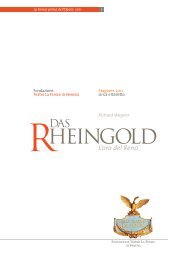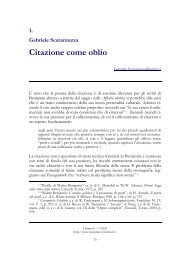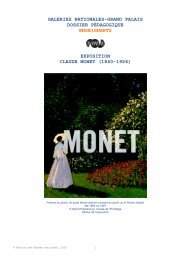Picasso - National Gallery of Art
Picasso - National Gallery of Art
Picasso - National Gallery of Art
You also want an ePaper? Increase the reach of your titles
YUMPU automatically turns print PDFs into web optimized ePapers that Google loves.
the many indigents and misérables he portrayed in<br />
dark corners <strong>of</strong> unnamed streets and cafés (no. 85),<br />
<strong>Picasso</strong> depicted prostitutes and their children at the<br />
women’s prison <strong>of</strong> Saint-Lazare (no. 74) in Paris.<br />
Rather than show the specific circumstances <strong>of</strong><br />
their misfortune, however, he idealized his figures.<br />
Using elongated proportions derived from El Greco,<br />
<strong>Picasso</strong> metaphorically allows his subjects to escape<br />
their worldly fate and occupy a utopian state <strong>of</strong><br />
grace. Some are afflicted with blindness, a physical<br />
condition that symbolically suggests the presence <strong>of</strong><br />
spiritual inner vision.<br />
Throughout the Blue period <strong>Picasso</strong> also created<br />
intimate portraits <strong>of</strong> his bohemian comrades and<br />
acquaintances in Paris and Barcelona, who sought<br />
to identify themselves with society’s dispossessed.<br />
Their relative poverty lends Blue period subjects a<br />
certain self-pitying air. Indeed, in his masterpiece La<br />
Vie (no. 93) <strong>Picasso</strong> originally planned to depict<br />
himself as the protagonist, although he ultimately<br />
substituted a portrait <strong>of</strong> Casagemas. Historians<br />
interpret this somewhat mysterious work as an<br />
no. 93. La Vie, 1903, The Cleveland Museum <strong>of</strong> <strong>Art</strong>,<br />
Gift <strong>of</strong> the Hanna Fund



